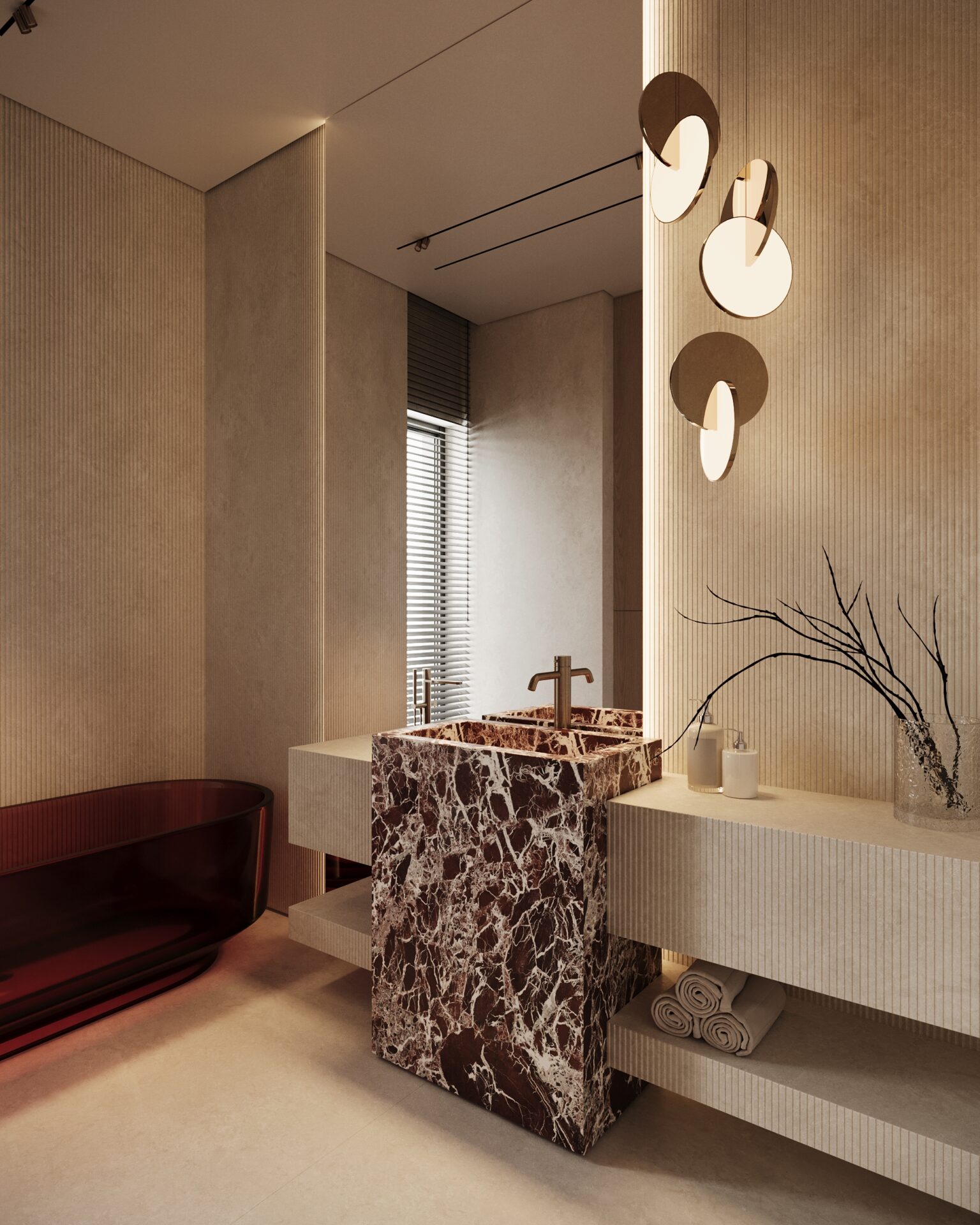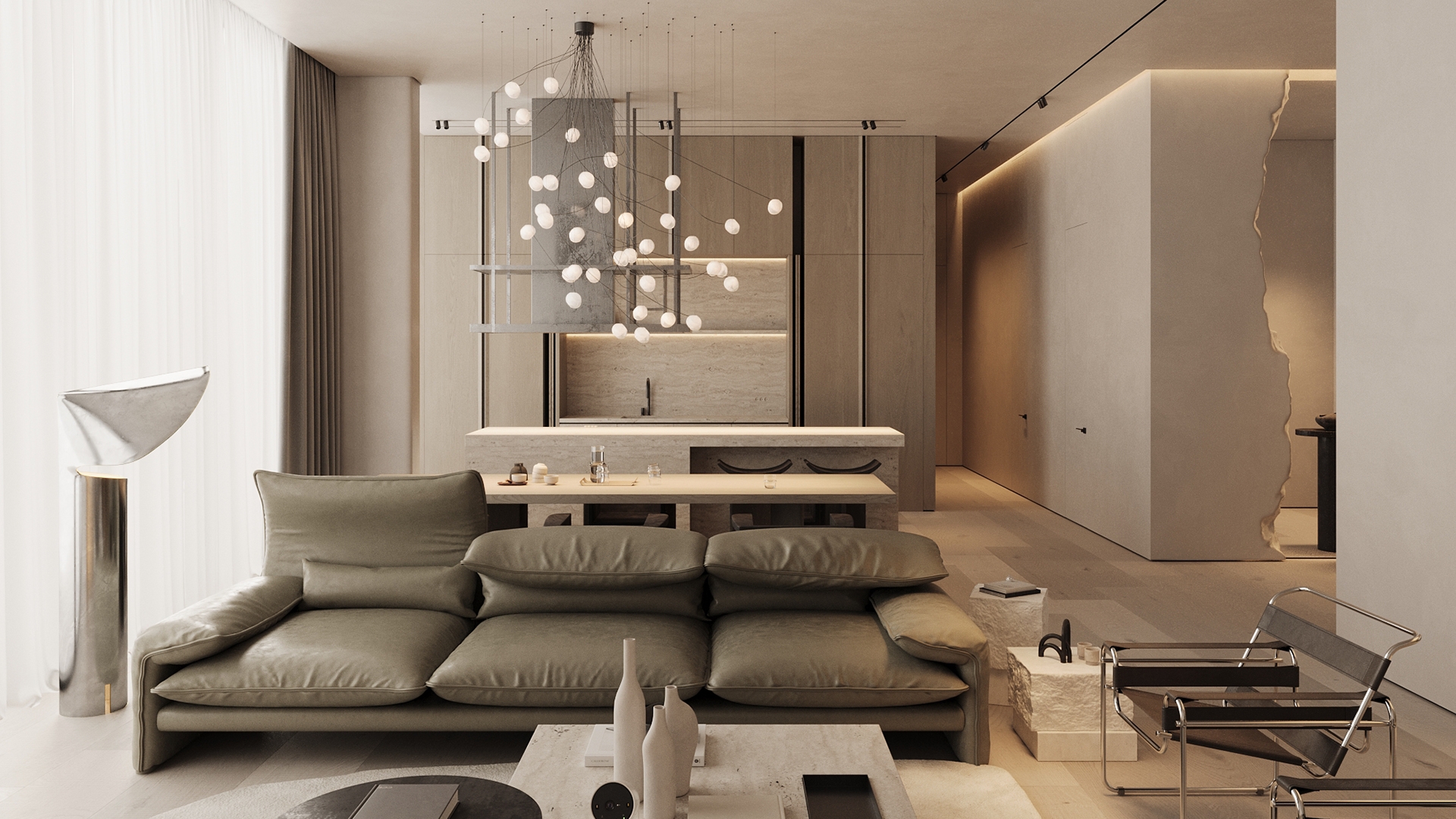This apartment unfolds in a series of connected spaces, each drawing from the same set of materials but giving them a slightly different role. The unifying element is the burgundy marble — a deep, almost wine-colored stone that appears in the bathroom basin, holds the weight of the dining table, and forms a horizontal strip behind a bedroom headboard. It’s a quiet signature, repeated just enough to be noticed.

In the main living area, pale flooring and muted wall panels act as a backdrop for furniture in cream, terracotta, and soft brown. The dining table’s marble base echoes the kitchen island, where open shelving and pale surfaces keep the space light. Linear track lights and pendant fixtures mark the key points without overwhelming the view.


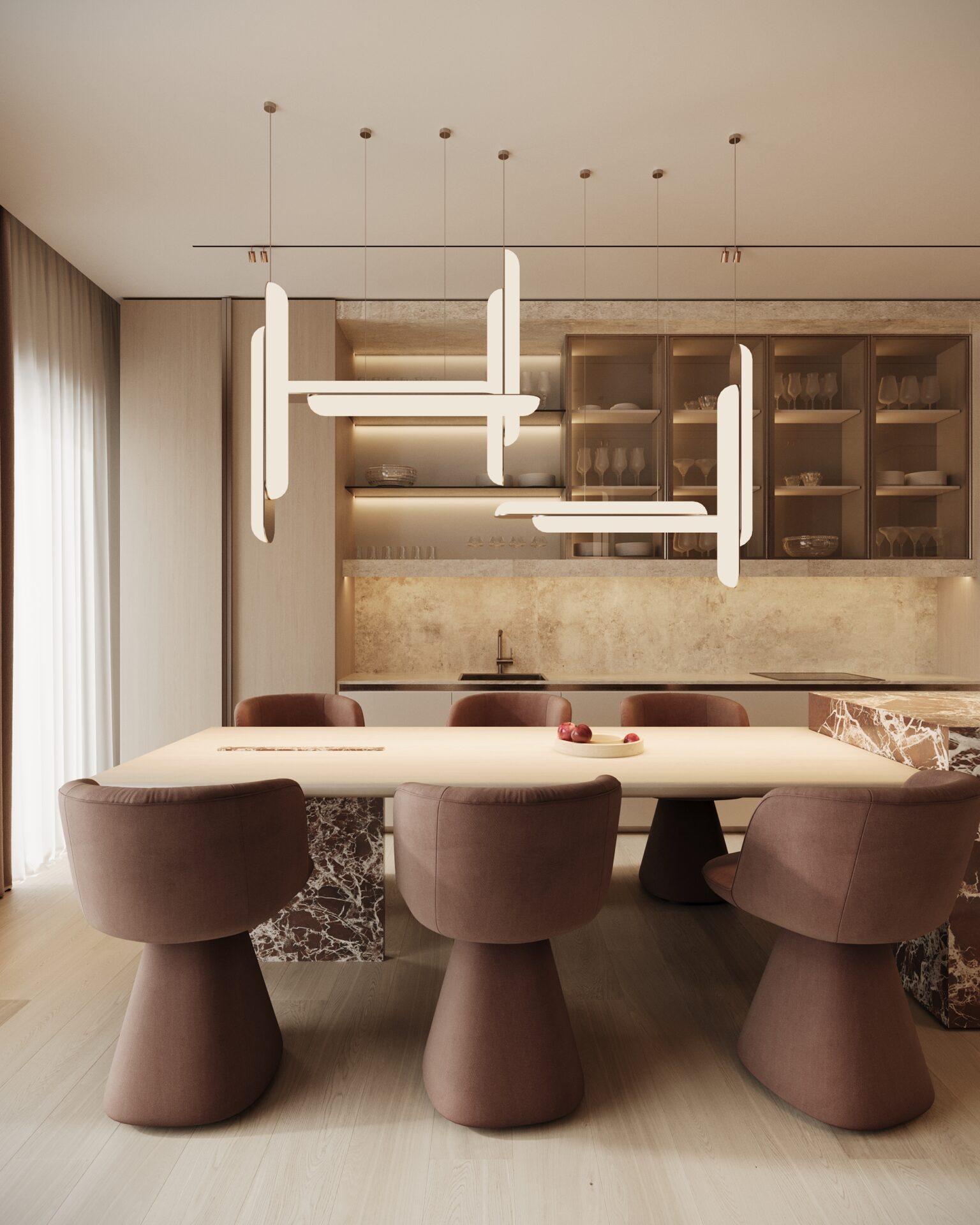

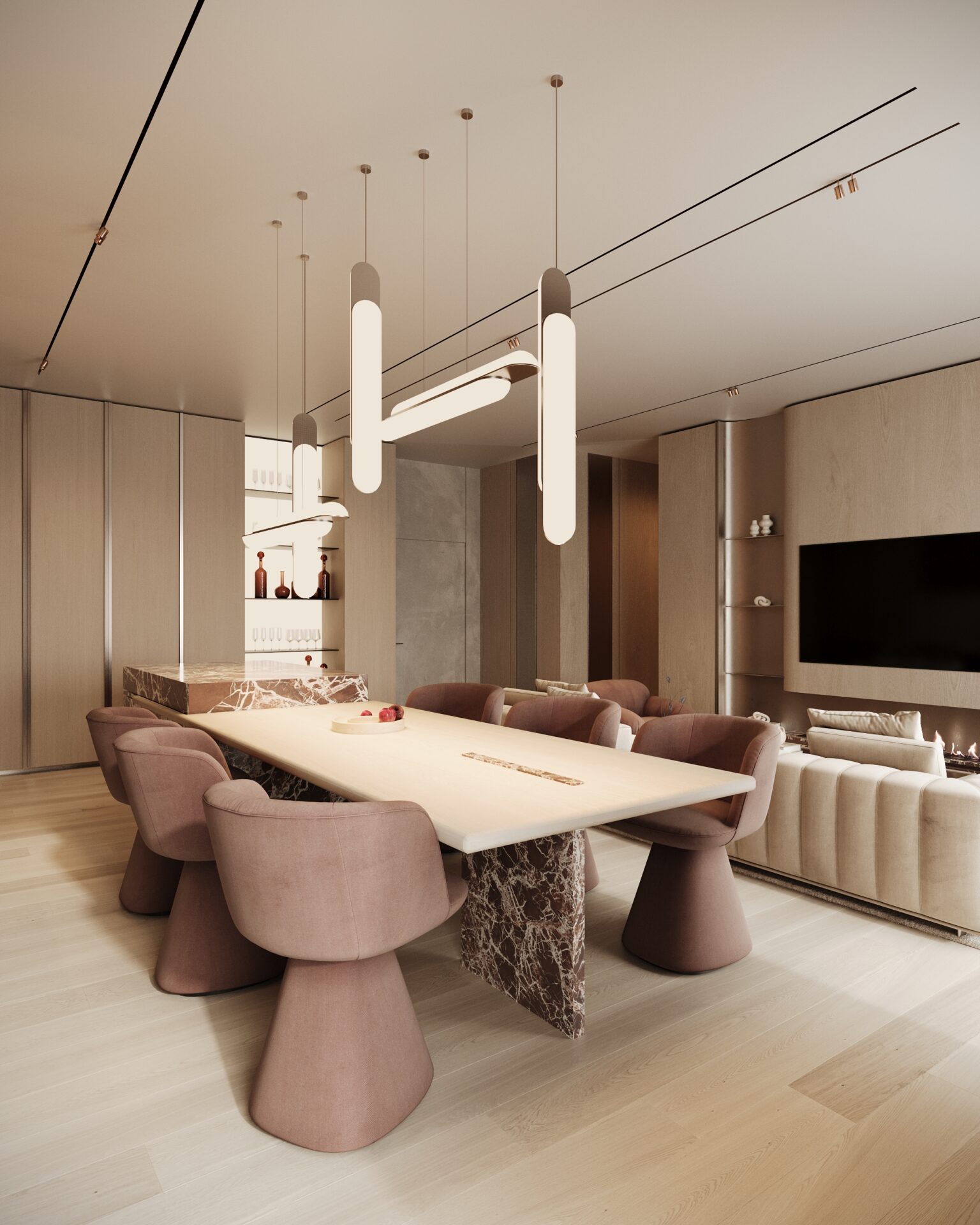

The bedrooms shift the palette slightly. One pairs a textured wall relief with a blush-toned bed, washing the surface with soft light from below. The other is framed by warm wood and upholstered panels, broken by that same horizontal marble line. Lighting stays low and layered, designed to graze textures rather than flood the room.
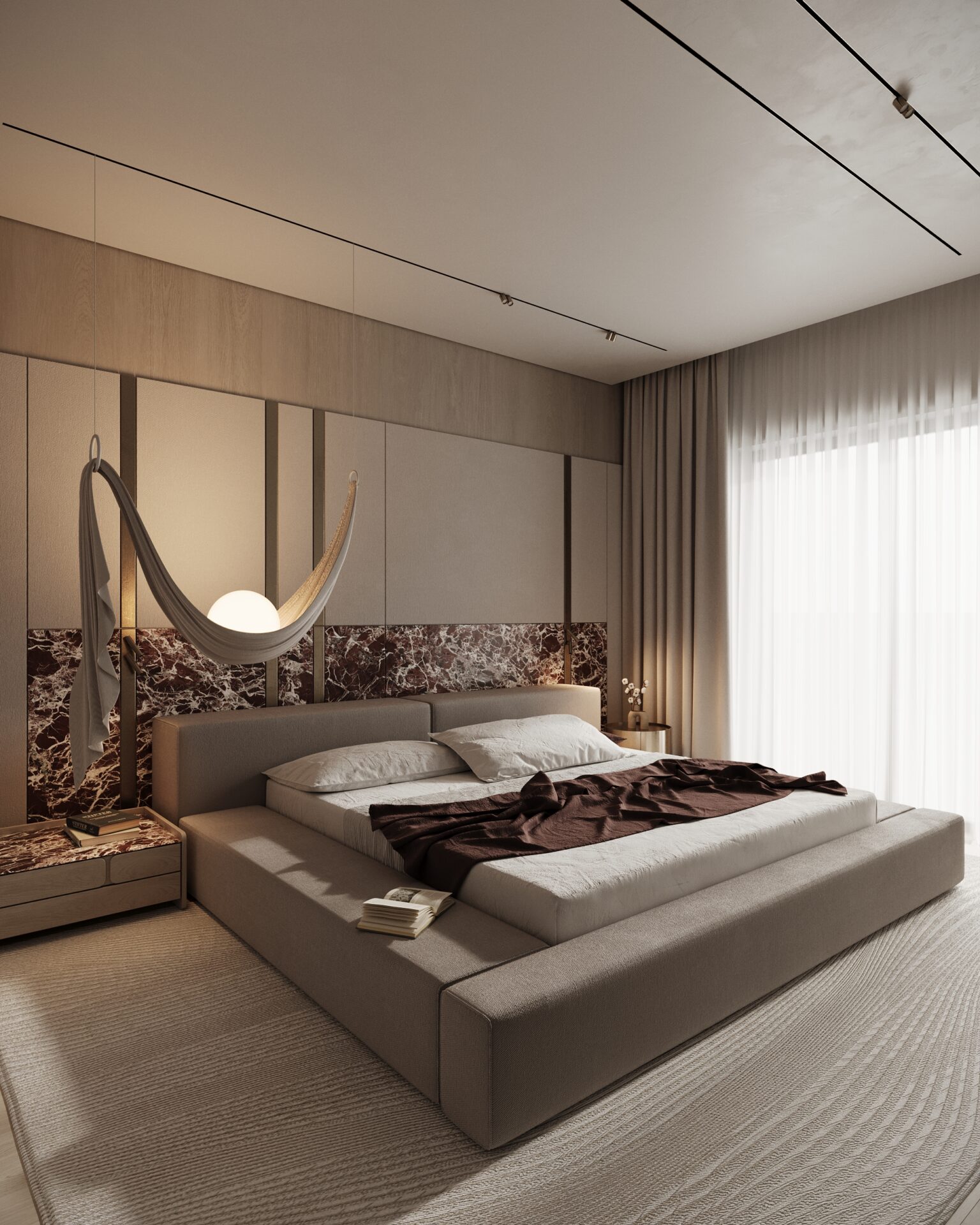


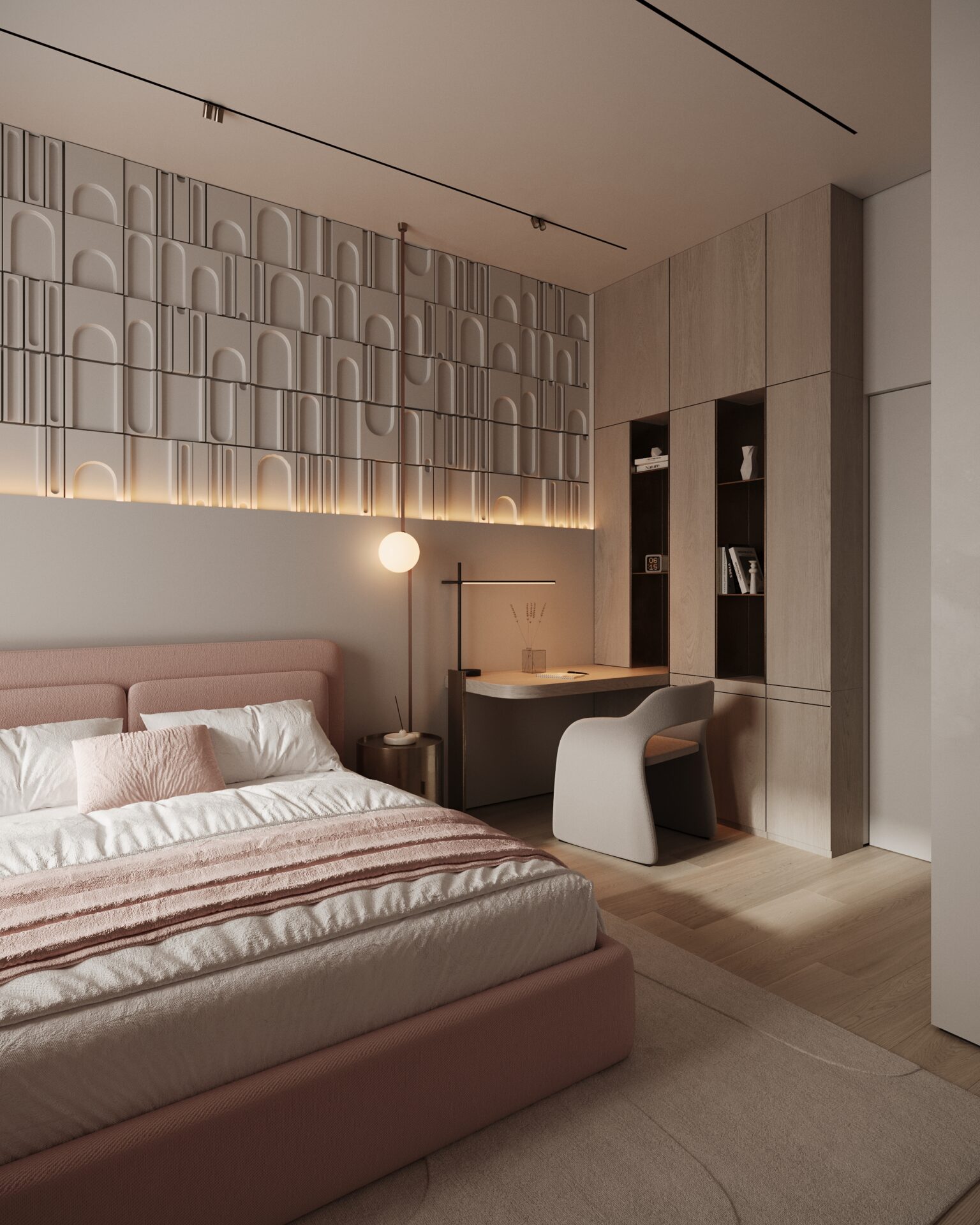
The children’s room swaps marble for playful, functional finishes — muted blues, olive greens, a climbing wall, and a rope net — while still following the apartment’s clean lines and restrained detailing.

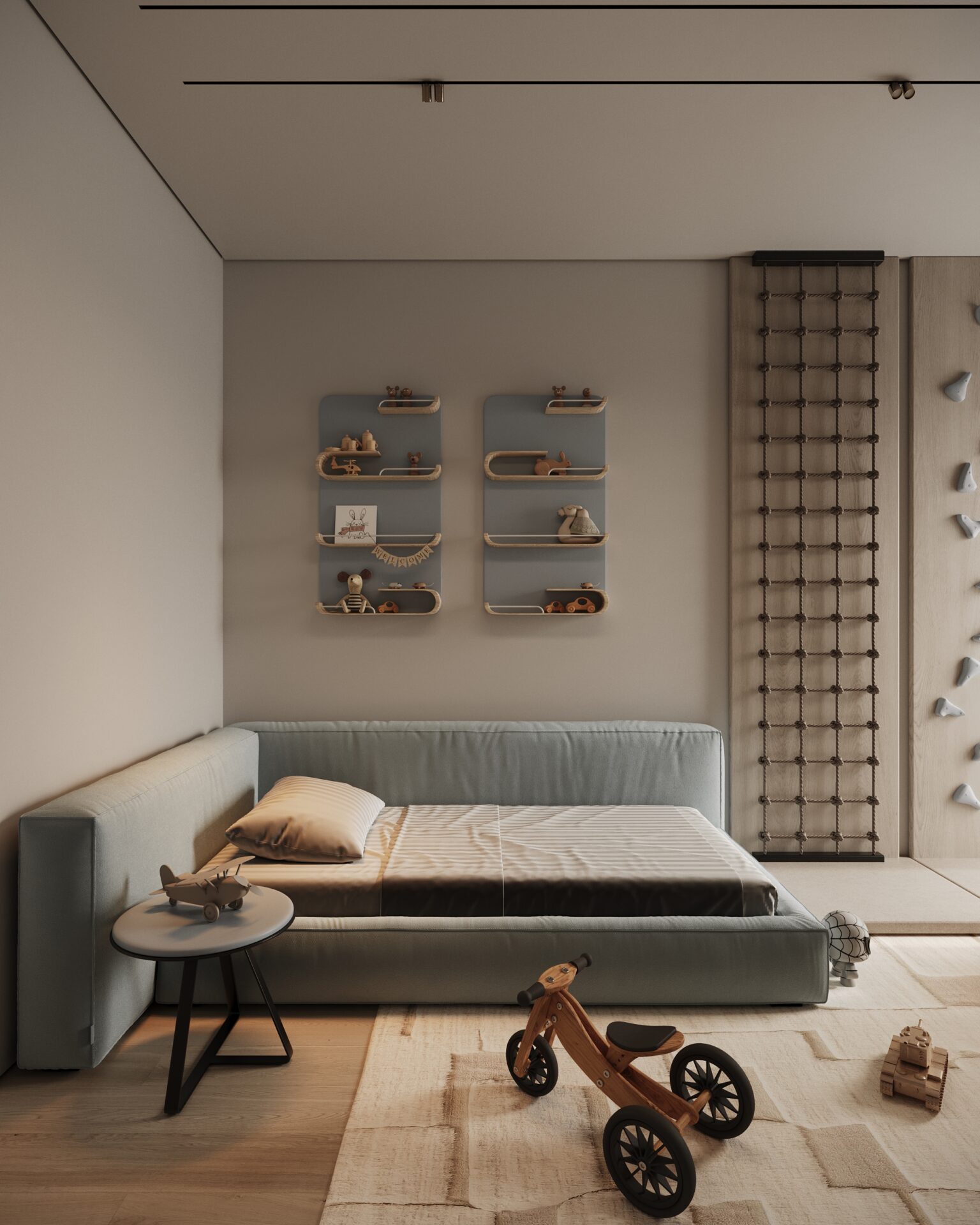
In the bathroom, vertical ribbed panels contrast with the smooth, polished basin. The translucent burgundy bathtub becomes a sculptural element, standing out against the otherwise calm surfaces. Storage is integrated into the wall, keeping the volume uninterrupted.
Across the entire home, the materials carry the story: wood, marble, ribbed panels, and soft fabrics. They appear in different combinations, keeping the rooms distinct yet part of the same visual language. The result is a sequence of interiors connected not by matching shapes, but by a shared sense of material rhythm.

